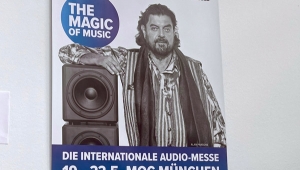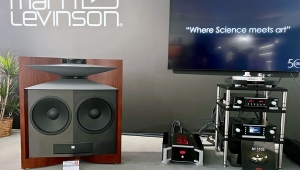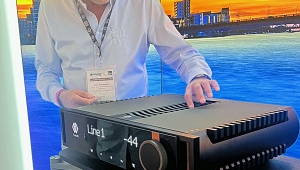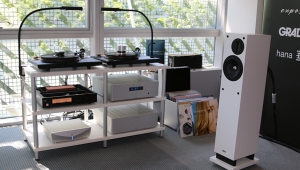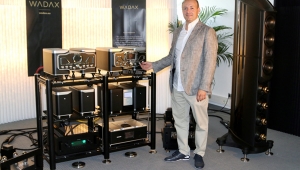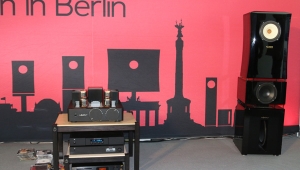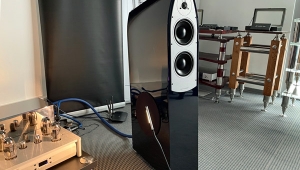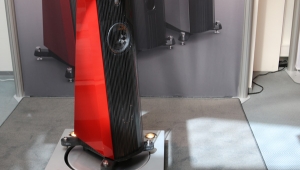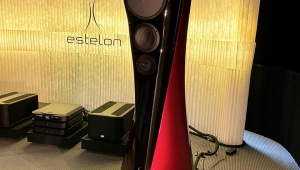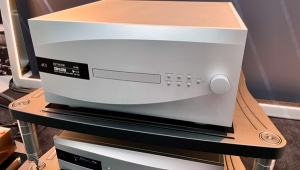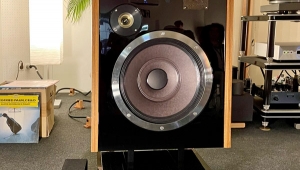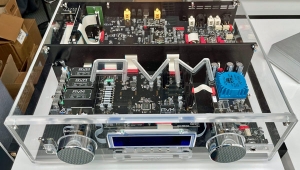| Columns Retired Columns & Blogs |
Wilson-Benesch's Omnium Loudspeaker Dances with Audionet's Stern Preamp, Bohr Phono Preamp, and Heisenberg Monoblocks
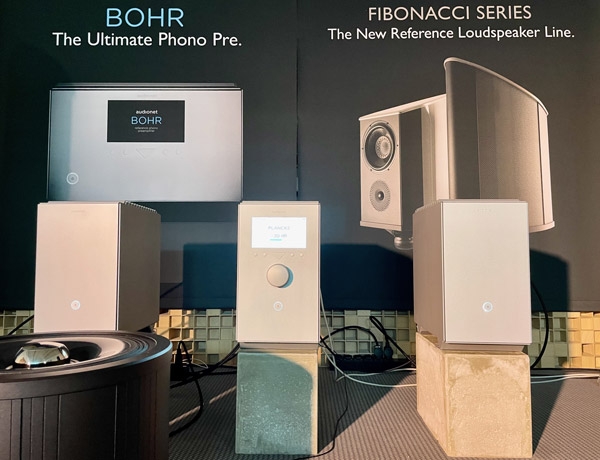
There are no accidents, eh? A chance meeting with Wilson-Benesch's Luke Milnes, followed by several email and WhatsApp check-ins, led me to my final exhibit at Munich High End. There, in a system that also featured Audionet products, reigned the 308lb Wilson-Benesch Omnium loudspeaker ($169,000/pair), second in command in the company's reference Fibonacci Series. Containing three pairs of isobaric-loaded woofers, two additional bass drivers, one midrange unit, and the Fibonacci tweeter, this hardly diminutive loudspeaker (shown below) utilizes new bio-composite technology that replaces the carbon-fiber Monique enclosure technology Wilson-Benesch pioneered in 1994.
Thanks to 4.5 years of research conducted by 22 partners, including three SME (small medium enterprise) partners, Wilson-Benesch has also found a way to eliminate all oil [petroleum]-based materials from its new bio-composite enclosure. One big speaker takes one small step for humankind.
Milnes said that Wilson-Benesch manufactures its drivers in the UK, and that all 4th-generation driver technology has been refreshed. The Fibonacci tweeter, for example, is a hybrid silk-dome baby with a carbon-fiber cross-brace. Output is claimed to be flat out to 30kHz. The Omnium, which uses "very simple" filters to maintain phase coherence, is reportedly "easy" to drive.
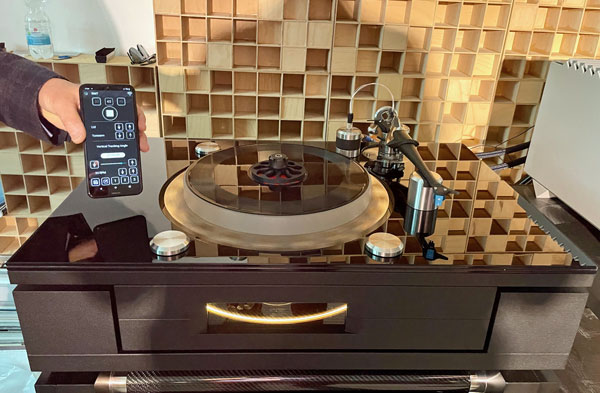
Wilson-Benesch Design Director Craig Milnes went to great lengths to sketch out the various levels of the company's forthcoming pneumatically isolated GMT System© turntable ($TBD). GMT, in this case, stands for "Greenwich Mean Time, and refers to the names of several of the table's elements. Expected in the first quarter of 2023, the turntable's foundation begins with the Alpha Drive, and extends up to the R1 Rack, Pneumatic computer-controlled Level to Omega Drive, Prime Meridian platter, and remote controlled Piezo VTA tonearm. The Omega Drive has extremely low torque and can be started using a phone app until it reaches the correct speed and locks.
There will be several versions of the platter, with choice of three tonearms, multiple platters, Remote VTA, and various tonearm storage systems determined by need and sonic preference. The tonearms are supported by a unique "kinematic" three-ball bearing system.
Audionet, too, made a very strong showing. Thanks to owner and CEO Stefan Schwehr, who reorganized the company after its 2018 bankruptcy, Audionet's original production team has produced the equipment shown in the room: the renovated Planck2 CD player with USB 2.0 input for files up to 24/192 (€14,900) and ART G5 CD player, and the pairing of the new Bohr phono preamplifier, which can handle up to four channels (€42,000) with the Stern preamplifier and Heisenberg monoblock amplifiers (€105,000 for all three) that was in use. Cables were by Audionet, and equipment racks were Wilson Benesch R1s. I only had time for the briefest of listens, but my impression was that the sound was commensurate with the price.
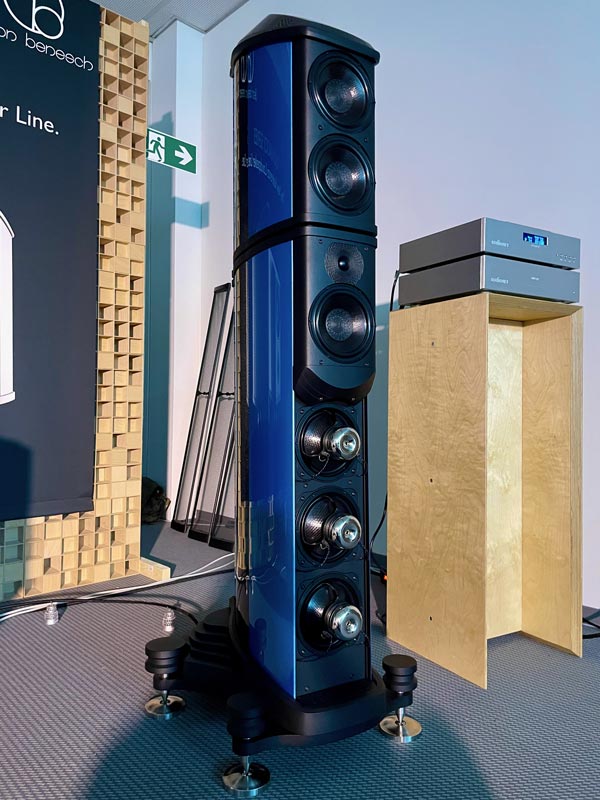
- Log in or register to post comments
